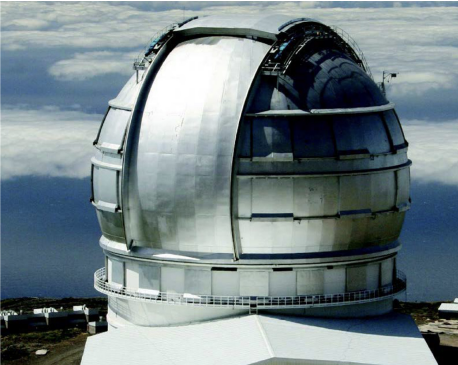A Star is Born: Gran Telescopio Canarias (GTC)
VxWorks Powers One of the World’s Most Powerful Telescopes
Because the telescope uses diverse equipment and instruments, the GTC’s software architecture must be open, flexible, and object-oriented. The telescope’s software architecture consists of a set of highly integrated systems, distributed via networks and organized as a layered architecture. This architecture provides scientists, regardless of their location, with access to different distributed services.
The GCS operates in real time, with a hierarchy of control layers and inter-processor communications. As is often the case in research fields, real-time guarantees are required in the communication networks, operating systems, and underlying middleware components, in order to satisfy quality of service requirements.
The end result is distributed middleware that provides a “plug-and-play” skeleton onto which the GTC’s different software components are connected. This architecture provides a homogeneous environment, reducing the time and cost of development.
“VxWorks is a high-performance RTOS with a wide adoption. It allows us to spend more qual-ity time on the application programming, rather than on configuring components of the operat-ing system or solving basic problems.”
— Martí Pi i Puig, Head of the Control Group, GTC Project
FOCUSING IN ON VXWORKS
When the collaboration began searching for an operating system that would support the telescope’s stringent requirements, it did not take long to focus in on the VxWorks® platform from Wind River®.
“Many of the GTC’s subsystems — such as motors, encoders, sensors, and cameras — require supervision on a material level and real-time results. But traditional operating systems did not meet the requirements we had identified for our onboard computers,” explains Martí Pi i Puig, head of the Control Group, responsible for designing, deploying, and supervising GTC’s material and software infrastructure. “After considering several alternatives, we chose VxWorks because we needed a sufficiently stable and high-performance real-time operating system so that we were free to concentrate on developing applications.”
Choosing VxWorks also meant the project could use VMEbus equipment and Motorola motherboards, which were poorly supported by other environments. Another convincing selling point was the fact that the GCS uses the distributed object management standard CORBA, which is soundly integrated in VxWorks.
“VxWorks is a high-performance RTOS with a wide adoption,” Pi i Puig says. “It allows us to spend more quality time on the application programming, rather than on configuring components of the operating system or solving basic problems.”
A JOINT UNDERTAKING
This project is a joint undertaking of the Canary Islands Institute of Astrophysics, the Institute of Astronomy at the National Autonomous University of Mexico, the Mexican National Institute for Astrophysics, Optics and Electronics, and the Astronomy Department of the University of Florida.
LEARN MORE
For additional information about the products mentioned in this case study, please visit www.windriver.com or www.gtc.iac.es.
